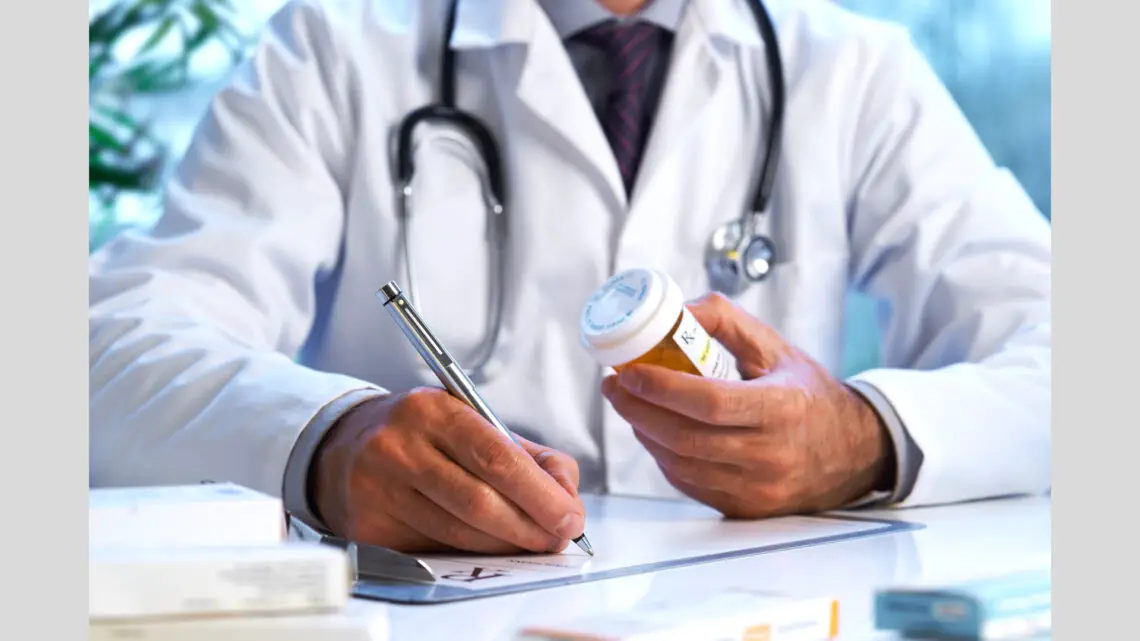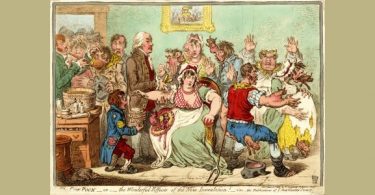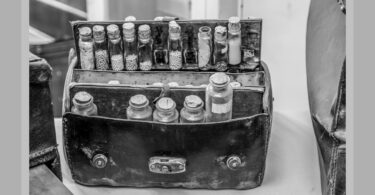For decades, homeopathy has been undergoing a kind of renaissance, whereby homeopathic academicians attempt to bring clarity and order to the complexity of modern day homeopathy. In an effort to refine and build upon Hahnemann’s teachings, leaders in homeopathic education are advancing new systems and methods all the time.
Their hope seems to be to provide a grounding and semblance of order to the ever-expanding pool of information daily entering into our databases. Arguably, these innovators and pioneers are attempting to further the scientific basis of homeopathy, with the intent of sharing the benefits they enjoy from their vision and hard work. But if you speak with students the world-over, there is widespread concern, as training for years often does not lead to high-level clinical performance and consistent results in practice. In other words, they still can’t find the simillimum after many hours and many dollars spent on courses.
One of central premises behind proficiency in Hahnemannian Homeopathy is producing consistency and reproducibility in the results of properly trained practitioners. The idea is that a group of well-trained homeopaths should easily come to agreement on the best indicated remedy for each case, should manage the case in a similar fashion, and achieve similar outcomes. Reproducibility of outcomes establishes a discipline on solid scientific footing and serves to enhance its public reputation as being sound and reliable.
Attend any homeopathic school or seminar where live cases (or video cases for that matter) are presented and you will see not only a curious lack of consensus over which remedy best fits the case, but you will also witness wide disagreement as to potency selection and case management issues. Even more disconcerting, one will discover often that a high percentage of cases seen in follow-up will have not responded particularly well to the remedy chosen by the instructor.
The purpose behind the growing number of new systems and methodologies for the practical application of homeopathy appears to center around improving competency among homeopathic trainees and guiding students through the labyrinth that learning homeopathic medicine has become. Finally, there has been a concerted effort in creating a new kind of order to our rapidly growing materia medica and expanding repertories. Information overload has long ago become a very real concern.
On another note, there also have been widespread changes and refinements of homeopathic philosophy, which are leading away from mathematical totalities in case analysis and searching for what might be referred to as the chief delusion, vital sensation, source disturbance, case essence, and the like.
With the burgeoning number of available proven remedies and rapidly growing repertories, it is mind-boggling just how to make this unwieldy complexity accessible to the student and practitioner. Classifications and groupings of remedies according to new theoretical frameworks have become the contemporary norm, though no universal agreement has yet been reached.
New methodologies for understanding our cases are also being widely proposed, while students struggle to apply them with the reliability and success they envisioned, after observing them in action at courses and seminars. Didn’t Hahnemann, in his footnote to Aphorism 1 of the Organon, exhort us “not to spin so-called systems from fancies and hypotheses” that do not have scientific validation or verification?
In theory, many of the currently taught systems sound intellectually plausible and are aesthetically appealing, yet in actuality they leave many students disappointed when they attempt to apply them. While many of these teachings seem to reflect the nature and the spirit of Hahnemann’s teachings, they arise out of an individual’s personal homeopathic experience and perspective, which was formulated after decades of clinical work. Such pioneers all created their new vision upon a solid foundation in the classical methods, philosophy, and extensive clinical exposure to patients. What works for the masters may not come so easily to the student or intermediate practitioner, if it comes at all.
For new and beginning students, or the discouraged certified practitioners of homeopathy, the burning issue and chief dilemma they now face is which path to choose, in order to acquire the necessary skills to achieve the exceptional results we as homeopaths know are possible (and always long for). When the day arrives when we open our doors to see patients in our own private clinics, we want our experiences in working with our patients to ‘click’. We all want to have been prepared to not only succeed most of the time, but to do so with enjoyment, satisfaction, and, even the thrill of wonderment or awe.
When I interview homeopathy students to determine if the promise of true proficiency in practice is actually being delivered by our programs (which I know from personal experience is widely accomplished in conventional medical training), it seems that we are missing the mark. By honestly examining the success rates in the private practices of our graduates, it is rare to find that they are achieving a high percentage of long-term cures (meaning at least 80% or higher). Most practitioners, when carefully evaluated, are finding the curative remedy less than 50% of the time at best, in the first few patient visits. Frustrated by these very lackluster results, students and practitioners are drawn to study more and study harder. In the end, this “go harder and longer” strategy yields diminishing returns.
It is my contention that superb, high percentage positive results are indeed possible, without the need of devising intricate systems, methodologies, and categorizations of our materia medica. What is needed for training and eventually mastering homeopathy is not more, but less. Filling our minds with copious amounts of information, diverse and extensive strategies in case observation and analysis, and increasing in-depth study of materia medica is not, and will not, lead us to the so-called Holy Grail of Homeopathy.
We need to rethink where the emphasis needs to be placed in homeopathic education. What we all want is to learn the essential tools for success and to find a way to incorporate them into our own style of practice. In short, while we are all aspiring to make the practice of homeopathy sure and certain, we must also find a way to make the work quintessentially one’s own, whereby one can express one’s own individual gifts and homeopathic genius.
The answer to the students’ dilemma lies in Aphorism 3 of the Organon, where Hahnemann states:
If the physician clearly perceives what has to be cured in disease, i.e., in each individual case of disease (knowledge of the disease ),
if he clearly perceives what it is in medicines which heals, i.e., in each individual medicine (knowledge of medicinal powers ),
if he applies in accordance with well-defined principles what is curative in medicines to what he has clearly recognized to be pathological in the patient, so that cure follows, i.e., if he knows in each particular case how to apply the remedy most appropriate by its character (selection of the remedy ), prepare it exactly as required and give it in the right amount (the correct dose ), and repeat the dose exactly when required,
and, lastly, if in each case he knows the obstacles to cure and how to remove them, so that recovery is permanent,
then he knows how to treat thoroughly and efficaciously, and is a true physician.
Over nearly two decades of clinical practice and nearly a decade of teaching, I have discovered that the key to success in the application of homeopathy is not at all dependent on endless training, but rather lies in the simplicity of Aphorism 3. It has much less to do with cramming more information and theoretical systems into our heads, than with learning to be simple again, to develop and utilize our capacity to be an objective observer, to “clearly perceive” as Hahnemann wrote. And no amount of external methods or getting more tools into our medical black bag will substitute for the rigorous requirement of learning to objectively observe what needs to be cured “in each individual case of disease.”
There is a simplicity and elegance in this kind of emphasis in learning homeopathy, because it places the center of gravity on exercising the powers of observation and innate healing gifts of each individual practitioner, rather than one’s capacity to master complex external systems and concepts. This approach encourages the student to develop and refine the innate capacities of conscious perception, arguably the most potent tool in any form of healing work.
In the process of developing our skills in objective observation, we also learn to engage our capacity to be present, drawing our awareness into alignment with the living being before us. This alignment produces a kind of resonance in ourselves and with the one with whom we are interacting. This resonant connection is crucial and underlies the alchemy of healing and transformation.
It can be said that in achieving this kind of inner resonance and presence, we and our patients become engaged in the moment with the process of healing and transformation, together. This existential experience makes the practice of homeopathy not only eminently alive and satisfying, but also, dare I say, mystical and miraculous. Through combining objective observation (the science) with real presence and connection with the vital energy existing in and around us (the art), we render the homeopathic encounter both meaningful and fruitful.
In this regard, Homeopathy is not a linear system. It is a multi-dimensional, spiritual healing modality which has less to do with ideas and more to do with what has been stated above, resonance. The Law of Similars, which solidly and incontrovertibly underlies the healing process, is a direct expression of the concept of resonance. In order to heal at all, there needs to be a resonant relationship between the disease and the restorative intervention. This is what is meant by the idea of similimum: that remedy that is most similar in resonance to the disease to be healed.
In the physical sciences, the never-ending quest for truth involves bringing objective observation to bear on material things, measuring them in the context of some purposefully devised experiment, and drawing conclusions from the results. For material questions, concrete quantitative tests can be devised to probe into the nature of things and prove theories derived from thought.
The scientific application of homeopathy endeavors to bring objective observation. But this is not enough. For homeopathic healing to occur, there is an equal measure of art in its application. This is because the objective observer must also engage his own being in the process, in order to arrive at the deepest level of resonance sought after.
Unlike material or physical science, in homeopathy, all measures are experiential. Thus the ultimate arbiter of truth is not observation alone. There is an element of feeling, stemming from the heart or core of our selves that comes into the mix. The gold standard of the homeopathic proving used to derive the medicinal powers of substance has no other goal than to define the qualities of things, not their quantities. There are no conclusions to be drawn, no theories to be proven. Pure, careful, objective observation, tempered with a feeling of appreciation of the data must be brought to bear in order to attain a deeper and greater understanding of each remedy’s resonant qualities.
By learning to develop objective observation, we begin to approximate clear perception in our cases and in our reading of materia medica. This action of objective observation, if maintained with pure intent and loving attention, brings the observer into a resonant relationship with that which is being observed, namely the individual and their unique disease state. It is at this stage that the heart center enters into the process.
Instead of external, intellectual reference points in which to pigeon-hole our cases, we learn to rely upon the internal experience of clear understanding of the case at hand, without reference to any other case or external idea. This kind of knowing is brought on by exercising our capacity for objective observation, coupled with an openness in the heart.
As this relationship grows and intensifies throughout the interviewing process, there can eventually arise a new type of knowing and seeing that carries with it a unique sort of sensation. It occurs when the core of what is there to be understood is uncovered and the seer and the seen are united by this resonant energy of clear perception.
To witness, to see and be seen, is a human faculty of spirit and cannot be reproduced by any formula or mechanical device, even the most sophisticated computer. Because homeopathy is a spiritual science, its ultimate meanings are uncovered through the experience of things, not so much from the thinking about them.
By teaching students how to be sound, objective observers, they gradually learn to catch the nuances and subtleties that present during case observation, and to identify much more readily that which is most characteristic to each case in question. Knowing that such characteristics must be covered by the remedy selected—because in being the most similar it must share them—clarifies the act of seeking the simillimum through the repertorization process. One learns to carefully choose symptoms in the repertory only after a clear understanding of the case is definitively established.
The trap that so often befalls the unwary student is to reference characteristics from external systems that he or she has already learned because they appear to match what one “thinks or believes” is taking place in the case. This looking to the outside for answers, before a deeply resonant connection is made with the case at hand—through objective observation and heartful presence—leads one away from acquiring the vital knowledge requisite for a true understanding of the case.
Instead, cases are blatantly or sometimes very subtly forced into known schemas, effectively matching the case to a remedy, category, or concept, rather than the other way around, matching a remedy to the case. Needless to say, this tendency leads predictably to unreliable results.
In essence, observing cases is an inquiry and search into the unknown. For many students, this search, to grasp the unknown and bring it to light, whether in ourselves or in case-observation, can be quite uncomfortable. Its accomplishment requires staying present, connected, and true to one’s essential being or essential nature. It means being willing to have a very open mind, free from prejudice, and an open heart, free from negative emotion.
Of course the real healing, the real magic of transformation of dis-ease into health, can only arrive in this present moment. And it is this present moment which is inherently unknown as well. For this reason, we can never value it enough.
In my training program, “Homeopathy Through Simplicity, The Objective Observer Course,” I instill a thirst to perfect the science and art of clearly perceiving cases, effectively replacing the need for extensive wrote memorization of pure data, and endlessly learning complex modern philosophies and systems of thought. While many such paradigms can be extremely fascinating and helpful at the level of highly experienced practitioners, many beginners and intermediate level homeopaths fall into frustration and confusion when trying to apply such approaches.
I lay down a solid foundation of Hahnemann’s “easily comprehensible principles,” as presented in his Organon of the Healing Art. After learning the important basics, the student begins the work of developing skills toward acquiring objective observation in cases. This skill applies equally to understanding the remedies of our materia medica, managing cases, and knowing when the healing process is complete, or a change in remedy is required. Along side the intellectual learning, students are challenged to confront the sources of their own biases, so that they can bring more openness and clarity to the patient encounter.
With practice and perseverance, under direct supervision by a practitioner who has mastered this way of working, most cases will readily open up and reveal themselves to the “objective observer.” Namely, after clearly perceiving a case, one is enabled to identify the key characteristics that reflect the dynamic disturbance. Then, with the use of a good repertory, one selects the pertinent central rubrics (usually 3-5 unarguable symptoms stemming from objective observation). The remedies which come through in this kind of repertorization can then be scrutinized one by one in the materia medica. Having already deeply understood the case, the remedy that matches will almost always “light up” and resonate deeply with the understanding and clarity that arose from objective observation in the case-taking process.
My experience has shown that this approach is reliable, reproducible, and accessible to students, new and old. In the evaluation of live cases in class, there is a high level of unanimity in characteristic symptom recognition, rubric selection, and remedy choice. The highly positive results in the vast majority of cases seen in class after taking the remedy is a testimony to the efficacy of this approach, and to the accuracy of this paradigm for teaching students what they truly need to know, in order to attain proficiency as practicing homeopaths.
These reproducible and satisfying results are achieved without ever attempting the impossible task of mastering vast segments of our ever-expanding materia medica or all the new systems of philosophy and thought being taught world-wide. All it seems to take is a willingness to establish a solid foundation in the basics of Hahnemann’s teachings and to gradually refine and perfect the high art and science of objective observation, while working with cases.
With the aid of the computer and the existence of extensive references and databases which are readily available today, logically there becomes less and less of a need for committing everything to memory. It turns out that Hahnemann’s aphorism 3 holds just as true today as it did the day it was written.
Learning to be objective observers is the most vital, powerful, and effective tool a student of homeopathy can develop and acquire. While there is no shortcut to mastery in any field or discipline, this path of learning Objective Observation, is certainly one that will help the motivated student arrive at eventual mastery, directly and with assurance. In my experience, you, the homeopath, are the most important tool in the toolbox, trumping all others by leaps and bounds.







If I understand this article correctly, I think Dr Falkner’s points are very necessary and encouraging and help to return homeopathy to its root in objective observation and [heartfelt] deduction. Without case examples it is hard to know whether I’m grasping it correctly however. I also wonder what views Dr Falkner has on what parts of the Materia Medica, and the various repertories, are accurate and reliable? It seems to me that both have hypertrophied beyond all reason.
Richard, thank you for your comment. I did publish an clinical case of Pericarditis and Pleuritis (https://hpathy.com/clinical-cases/a-case-with-pericarditis-and-pleuritis/) which might address one of your concerns.
In terms of accurate and reliable repertories and material medica: Certainly there is increasingly suspect information in our databases. The proliferation of information and uncontrolled methods used to conduct provings, and criteria for the inclusion of remedies in our repertories is not always applied properly or without error.
Nevertheless, I don’t see that as an insurmountable problem. My experience has shown that any case well understood offers many doorways into the remedy. In the main, I’d rather have bloat than restriction, since without all the available information, some remedies would not easily be found, if at all. A careful selection of rubrics and reading of our material medica, with a sprinkling of skepticism goes a long way to sorting out the reliability issues the vast majority of the time, which is good enough for me. (I am only referring to classical information, not modern categorizations and classifications of remedies and themes, or modern miasms)
We simply cannot exclude valuable remedies, symptoms, and material medica just because some of it is imperfect or useless. I know of many patients who would have been poorly served if we did.
Thank you for your detailed reply to my questions — I’ve looked at the case of Placenta and come a step or two closer to understanding your approach, which appeals to me very much. I don’t wholly agree that a bloat is better than limited but reliable info. I suspect that 80% or more of cases could be treated with only the classical materia meds and repertories — it”s the others (like the Placenta one) that do justify including doubtful material.
I see you run a distance learning course — could you send a brochure by email to me?
I think it may be my next step, something I’ve been considering lately.
Dr. Douglas
Thank you for confirming the role of keen observation for me today in case taking and following a case. As a recent graduate from the International Academy of Classical Homeopathy I truly value your insights shared in this article. Keep up the inspiring work!
I am in the process of putting together my marketing and promotion in Flagstaff AZ and want to help as many people as possible while still paying the bills. Any advice?
Be well
Scott Nicholson CH LMT MFA
DEAR DR,
I AGREE FULLY THAT TO FIND A CORRECT SIMMILIMUM IS A VERY DIFFICULT ONE AS NO TWO PERSONS ARE SAME OR SIMILAR IN PERSONALITY AND IQ. BUT STILL WE CANNOT FIND PROVING ON 700 CRORES REMEDIES. WE HAVE SEVERAL LIMITATIONS BUT STILL WE HAVE TO WORK OUR BEST TO RESTORE HEALTH OF PEOPLE. THE MOST IMPORTANT IN OUR PROFESSION IS TO SHARE OUR EXPERIENCES. IN THIS MISSION DR MANISH OF HAPTHY IS DOING A LOT OF SERVICE FOR US.THANKS TO HIM
THANKS
DR SHEKHAR
DEAR DR,
I HAVE SEEN IN MY PRACTICE THAT A REMEDY WHICH CURES A DISEASE ONE TIME. THE SAME REMEDY DOES NOT WORK ON THE SAME DISEASE ON THE SAME PERSON. PERHAPS HIS BODY BECOMES IMMUNE TO THAT REMEDY.
I WANT COMMENTS FROM U OR OTHER DRS ON IT
THANKS AND REGARDS
DR SHEKHAR
Dr. Shekar,
To better answer your question, I would need to know what you mean by “disease” and “cure” in your comment. Without knowing how you are thinking about these two things in the instance you refer to, it would not be easy to answer your very interesting question.
Dr. Doug